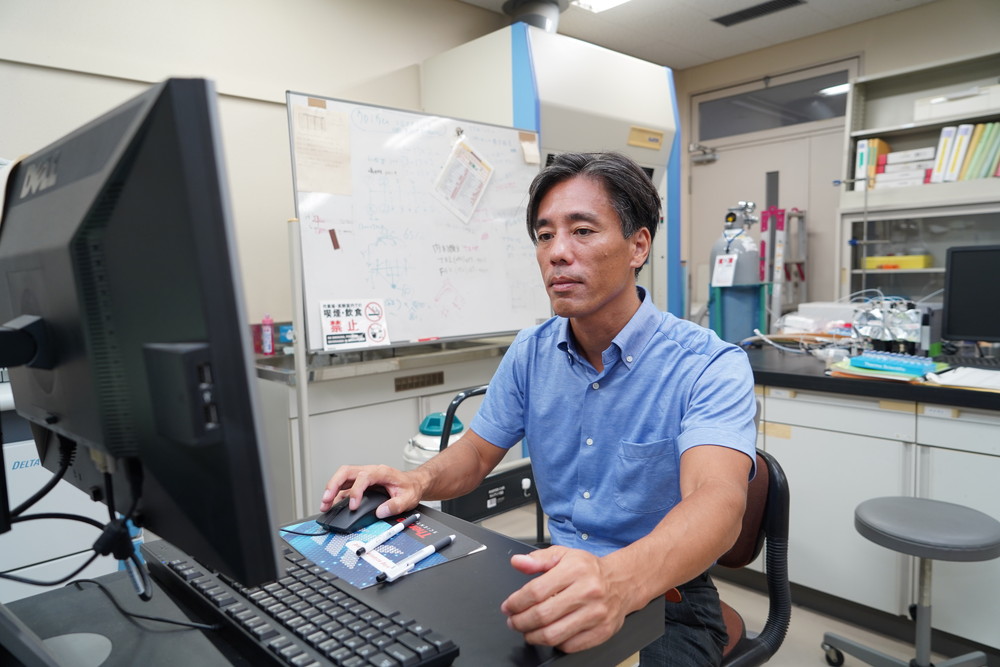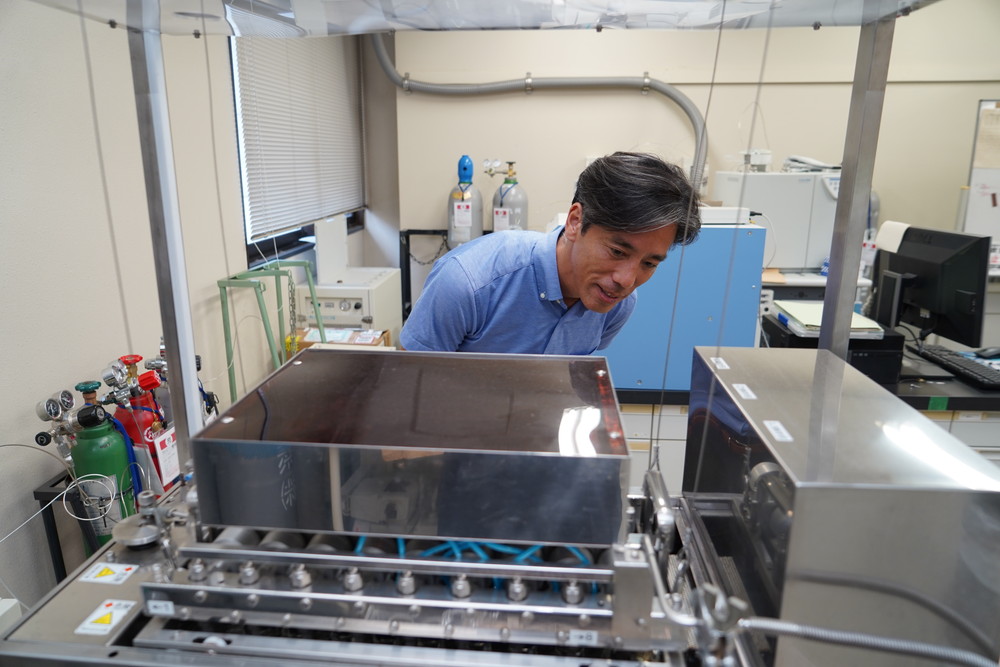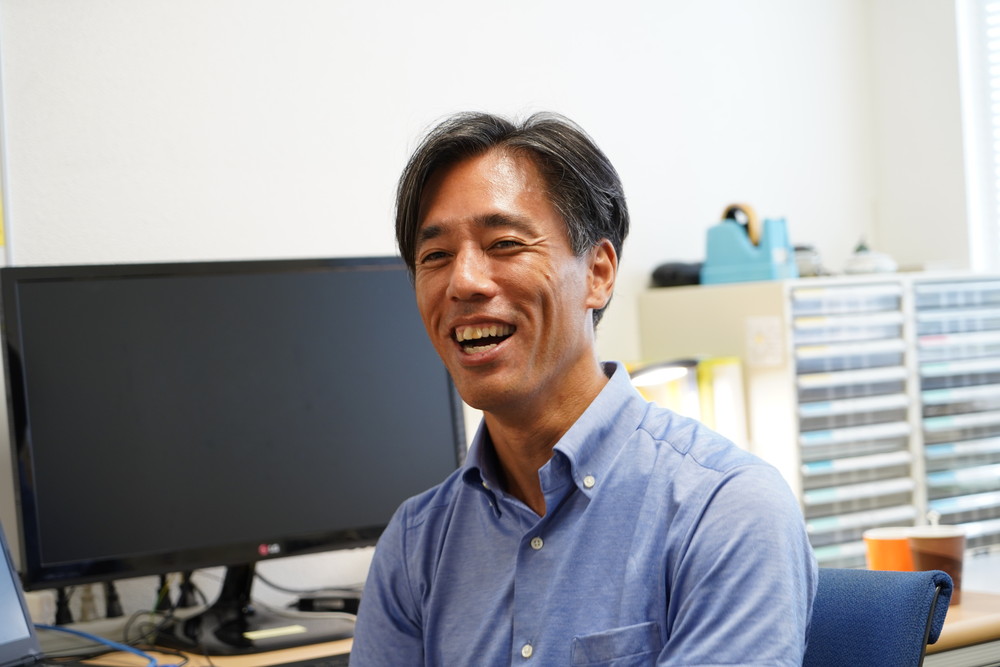NEWS
IROAST Researcher - Dr. Takahiro Hosono
English Japanese
Visualization of changes caused by human activities to Earth’s carbon and nitrogen circulation system

Prof. Takahiro Hosono
IROAST International Joint Research Faculty Member
Faculty of Advanced Science and Technology (Faculty of Science)
Today, the Earth’s carbon and nitrogen circulation system is being disturbed and changed by human activities, leading to climate change and environmental destruction. By analyzing the water on Earth’s surface, one can examine the sources and movements of substances in water and accurately visualize the changes in the circulation systems caused by the stress humans create. This is the work of Professor Takahiro Hosono.
■ Measurement of isotopic ratios in water. Examination of the circulation of water and substances that are invisible.
Q: Can you introduce your research?
Hosono: I study how Earth changes due to human activities based on earth science and earth system science that examine the formation of Earth. Specifically, I focus on Earth’s surface water. I analyze water samples from precipitation, surface water, groundwater, deep geological fluids, etc., to understand isotopes and water compositions.
To be more specific, I use a mass spectrometer to measure the isotopic ratio of elements in water samples. The obtained data show the circulation of water and substances on the surface and groundwater that are invisible to the eyes and why they change. By combining the chemical composition and isotope data with various other related information, water and material circulation and changes caused by human activities can be accurately visualized. This visualization is the environmental analysis we want to establish.

Q: What substances in water do you examine?
Hosono: One of the substances that I examine is carbon. Carbon dioxide is known to cause global warming; however, a system already exists in nature in which released carbon dioxide is absorbed by forests and ground and the remaining carbon in water is washed out to the sea. This system was being maintained at a certain ratio. However, today, this system is disturbed by stresses caused by humans. The ‘where’ and ‘how’ of these changes are difficult to describe with one word without an integrated understanding of the balance of carbon dioxide. Since my research centers on water, as a small cog of a large carbon circulation, I focus on carbon in water.
One place I collect my samples is rivers. Rivers appear to be a line in a landscape, but since water that falls in a basin gathers in a river from various locations and ultimately reaches the ocean, this water has planar information for the entire basin. With the information on the substances in water, we can understand characteristics such as how many people live in the area and what they do. Based on such information, we can create measures and goals for the area. For example, ‘we should choose this method since there is much more discharge of carbon than absorption.’ I believe such attempts will be implemented in the future and hope that studies on carbon circulation within the water cycle become one of the tools.
Q: Aren’t changes to groundwater a concern for the groundwater city, Kumamoto?
Hosono: I also study nitrogen, which can be considered the biggest problem for groundwater quality. Most of the nitrogen on the Earth’s surface is found in the atmosphere. By artificially fixing nitrogen and using it as fertilizer and so on, we are able to meet the food supply required for the Earth’s increasing population. At the same time, nitrogen oxides are raw materials for gunpowder; thus, they have an impact on the scale and form of war and can dramatically change the world.
Since nitrogen easily penetrates underground, it leads to groundwater contamination and eutrophication. This environmental contamination is not limited to land but appears in various places such as shorelines. Kumamoto uses groundwater for drinking purpose and requires constant monitoring for its continued use. Moving forward, I hope to create a map of the nitrogen composition of all rivers in Japan.
Earth’s preexisting circulation systems of carbon and nitrogen are both being disturbed by human activities, leading to global environmental problems. My goal is to visualize the movements and origins of such invisible substances.
■ Arriving at today’s research with the aim of applying the knowledge from physical science to environmental problems
Q: Why did you start this research?
Hosono: First, I was studying the flow and convection of the Earth’s mantle along with where and how metal deposits, such as those of gold and silver, form. It is a bit romantic, isn’t it? Through such studies, I became interested in stable isotopes. Analysis of stable isotopes can provide information on the movements and origins of substances. I found this field interesting.
However, with the global environmental problems that exist at present, I thought these would be the target of my new research based on my basic research. Back then, switching from basic research to environmental research was considered as being “trendy”. However, a professor who was advising me was a courageous person, who was pioneering the environmental field anew. This inspired me and before I realized it, I had already started working in this area.
Q: What kind of international joint research are you working on?
Hosono: I sometimes head out to other countries, especially Asia and Africa, to conduct fieldwork, but foreign researchers visit Kumamoto to conduct joint surveys in Kumamoto and other areas of Kyushu as well. Working with researchers from overseas for many years gave me opportunities to understand international trends during casual conversations and to realize the fact that all of us face similar challenges regardless of the country we come from.
When working with internationally well-known professors, their skills inspired me. I learnt to write academic papers efficiently. Now, I instruct others how to write their academic papers, which I do by imagining myself in their position. Other than physical advantages, I see the value of joint research in these intangible aspects.

■ Writing a paper offers a singular direction. Academic writing support is one of the advantages of IROAST.
Q: Why did you join IROAST?
Hosono: Initially, I finished teaching geology at a university and joined a laboratory to study environment systems. After approximately two years, I wanted to continue studying the water cycle at the university I was transferred to, but I was unable to create an ideal research environment there and had to leave the job. Subsequently, I came to Kumamoto University, especially because a professor I admired was working at the University. He is no longer with the University, but I am glad that I got to work with him.
This professor was the team leader of an international base prior to the establishment of IROAST, so I joined that base. When IROAST was established, I naturally shifted to IROAST. I find the financial aid for research from IROAST helpful as maintaining analytical devices is costly. Furthermore, publishing papers, including proofreading, is also costly; thus, it is helpful that IROAST offers support in these areas.
Q: What do you do on your days off?
Hosono: I like writing academic papers. People tend to assume writing academic papers is taxing, but writing a paper gives me a singular direction. In addition, while I am writing, academic questions that lead to the next stages become clear. To me, writing academic papers organizes my thoughts, clarifies the next step, and refreshes me. For these reasons, I used to work on papers on days off, thinking that “I can finally take time to write my papers.” But recently, my daily tasks have increased, so I am taking a break on my days off to stay healthy.

Reference links
- IROAST Staff - International Joint Research Faculty Member
- Laboratory for watershed hydro-environmental study (Hosono Lab.), Kumamoto University

